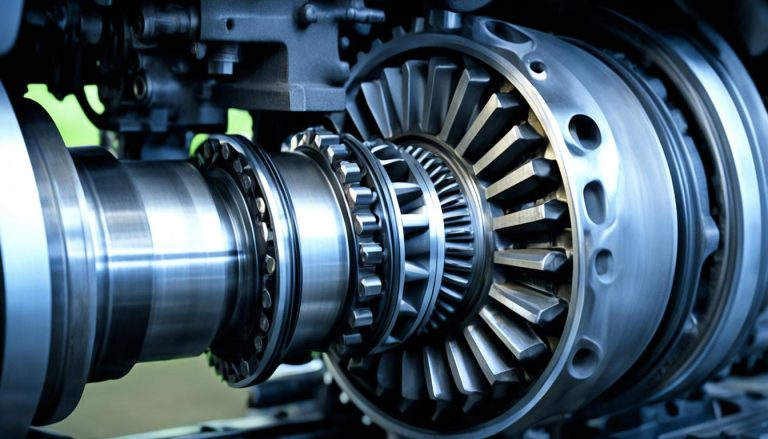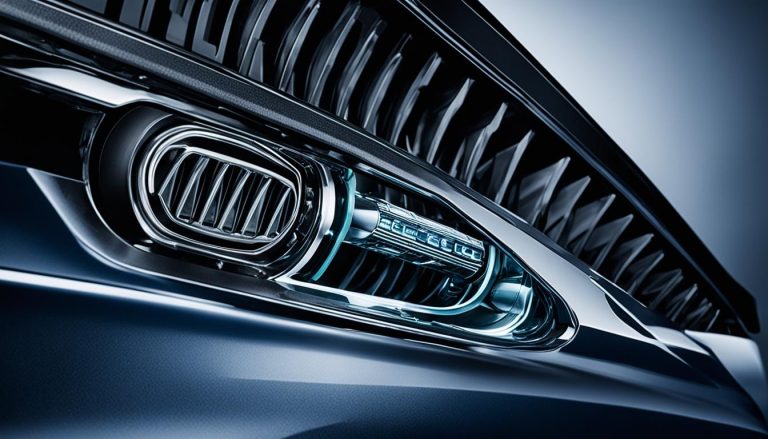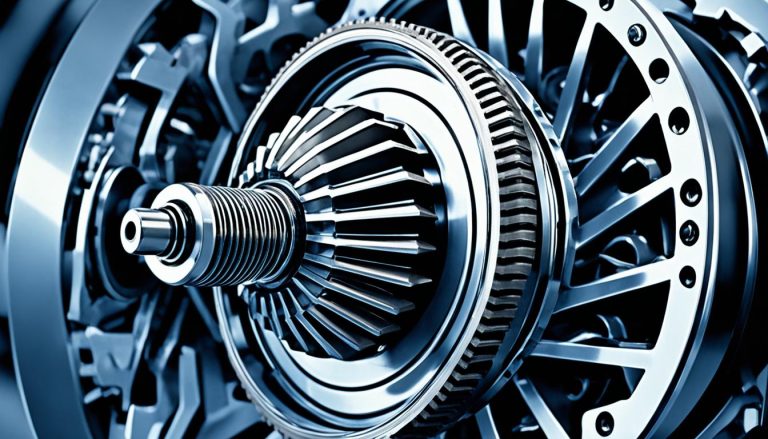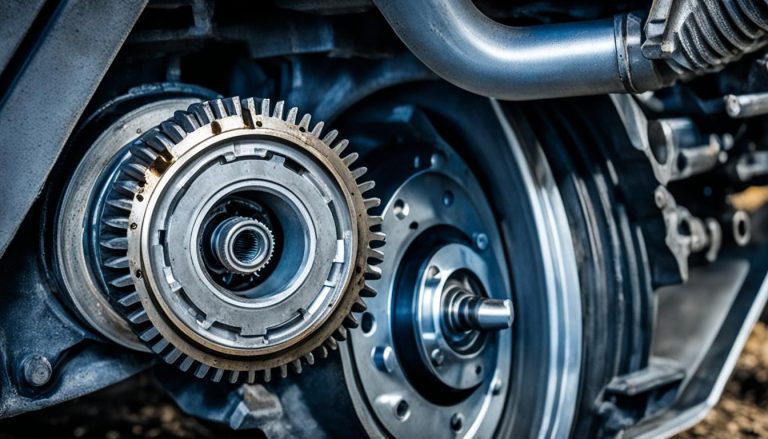3.15 vs 3.73 Limited Slip Axle: Key Differences
When you’re navigating through the extensive world of vehicular performance, the difference between a 3.15 and a 3.73 limited slip rear axle may seem like a small detail, but it’s a pivotal decision that can redefine your driving experience. Whether you’re looking to boost your vehicle’s traction on slippery roads or seeking that explosive start off the line, understanding the nuances between these performance rear axle options is essential for crafting a ride that meets your specific demands and maximizes your driving pleasure.
A limited slip differential is at the heart of this comparison, serving as the critical component that allows optimal power distribution to your wheels. The choice you make here influences not just the feel and response of your vehicle, but also its efficiency and capability under varying loads and driving conditions. Settle in as we steer through the differences to empower you with the knowledge to select the gear ratio that will take your driving experience to new heights.
Key Takeaways
- The axle ratio you pick has a direct impact on your vehicle’s acceleration, towing power, and fuel efficiency.
- Choosing a 3.15 or 3.73 limited slip rear axle depends on your individual driving habits and performance requirements.
- For efficiency on the highways, a lower rear axle ratio like the 3.15 is often the way to go.
- If you’re looking for more torque and enhanced traction, especially for towing or rigorous driving conditions, the 3.73 may be your ideal choice.
- Limited slip differentials provide the advantage of distributing power to both wheels, thus maximizing traction.
- Understanding the difference between 3.15 and 3.73 limited slip rear axles helps in making an informed decision for an optimal driving experience.
Understanding Axle Ratios and Their Impact on Performance
When contemplating the complex mechanics of a vehicle, one can’t overlook the significance of the rear axle ratio. This term might seem technical, but it’s actually a simple concept that affects your car’s performance in multiple ways. Let’s delve into the world of axle ratios and understand why it’s a key factor you should consider, especially when discussing a limited slip rear axle or making comparisons within the rear axle ratio comparison scope.
What is an Axle Ratio?
An essential aspect often pondered by car enthusiasts and professionals alike is the question: What exactly is an axle ratio? In simplest terms, the axle ratio is the number of driveshaft revolutions required to spin the wheels once. This gear ratio directly impacts engine speed and efficiency. It’s a balance between power and consumption – where every turn of the wheel counts.
How Axle Ratios Affect Vehicle Dynamics
Choosing the right axle ratio is more than just a matter of numbers; it’s about aligning with your driving habits and expectations from your vehicle’s performance. Whether you’re inclined towards a calmer, low RPM highway cruise or geared up for hauling heavy loads, understanding how the axle ratio such as 3.15 or 3.73 affects your drive will guide you in making an informed decision.
| Axle Ratio | Engine RPM | Acceleration | Fuel Efficiency | Towing Capacity |
|---|---|---|---|---|
| 3.15 | Low | Moderate | High | Lower |
| 3.73 | High | High | Lesser | Greater |
It can be enlightening to witness how a shift in numbers from 3.15 to 3.73 may define your vehicle’s prowess on different terrains and scenarios. With a limited slip rear axle, you broaden horizons for greater grip and stability, enhancing the driving experiences that matter the most to you.
Comparing 3.15 and 3.73 Limited Slip Differentials
When you’re considering rear axle upgrades for your vehicle, understanding the difference between 3.15 and 3.73 limited slip rear axle ratios is crucial. These numbers aren’t just arbitrary; they reflect how your car will ultimately perform on the road. Let’s break down these key differences to ensure you choose what best fits your driving style.
A limited slip differential is designed to provide improved traction by distributing power to both wheels, even if one is off the ground or on a slippery surface. For those who find themselves frequently driving in challenging conditions or hauling loads, choosing the right differential is paramount. The 3.15 and 3.73 ratios stand as popular options, but they cater to different needs.
The 3.15 limited slip differential is generally best suited for drivers who spend most of their time on highways and prize efficiency above all. If conserving fuel and enjoying a smooth ride at high speeds are your top priorities, this ratio could be the right choice for you. On the other hand, the 3.73 limited slip differential gears toward drivers who require more robust performance from their vehicles—particularly during towing or when quick acceleration is needed.
- If efficiency during long highway drives ranks high on your list, the 3.15 ratio might be your best bet.
- In contrast, if you need enhanced pulling power and acceleration, especially for tasks like towing, the 3.73 ratio is likely more suitable.
In summary, your decision should hinge on your driving scenarios and whether you lean towards efficiency or performance. Both choices have their clear benefits, and a conscious selection can lead to a more satisfying driving experience.
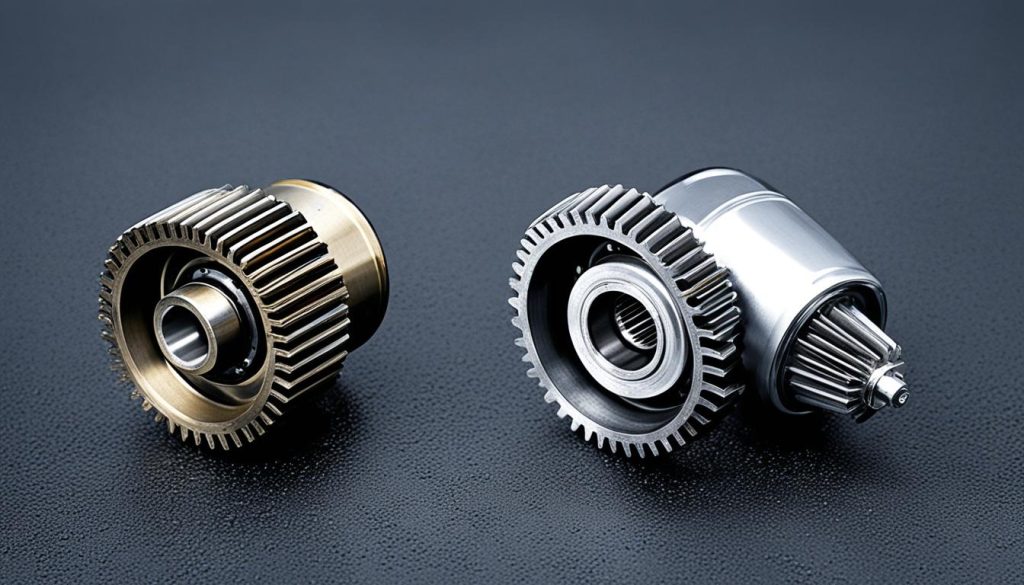
Still undecided? Consider this: If you frequently encounter harsh weather conditions or rough terrain, the 3.73 limited slip differential’s superior traction can offer peace of mind and safety. Alternatively, if you’re cruising smoothly on the open highway with minimal stops, you might hardly notice the high-performance edge, making the 3.15 the smarter, more economical option.
Remember, upgrading your rear axle is not just about the present conditions but also the potential scenarios you might face in the future. Take the time to assess your driving habits and the demands placed on your vehicle, and you’ll be more likely to select an axle that not only suits your current needs but also adapts to your ever-evolving lifestyle.
Difference between 3.15 and 3.73 Limited Slip Rear Axle
When you’re in the market for a vehicle that can handle your driving demands, the type of limited slip rear axle it has can significantly influence performance. Recognizing the role of torque and traction in your vehicle’s dynamics is crucial, especially when deciphering the difference between 3.15 and 3.73 limited slip rear axle setups. These numbers might seem small, but they represent the scale of transformation in how your car puts down power and moves you forward.
Let’s dive into the mechanical heart that channels engine power to the road. The limited slip rear axle is known for its superior handling, translating to less wheel slip and more stable acceleration, particularly on surfaces where grip might be compromised. This system becomes even more important when considering the axle ratios in discussion: the 3.15 and the 3.73.
Examining Torque and Traction Differences
The axle ratio’s influence on torque—the force that turns your wheels—is not to be overlooked. With a 3.73 limited slip rear axle, your vehicle benefits from higher torque, providing more immediate response and power for accelerating from a standstill or climbing uphill. Think of it as the muscle that gives your vehicle the boost it needs when the going gets tough.
In contrast, the 3.15 limited slip rear axle may not offer the same raw acceleration, but it excels in delivering a more tempered thrust that is efficient and smooth—perfect for those long stretches on the highway where steady speed and fuel economy are desirable. This balance renders the 3.15 ratio an ideal choice for everyday commuter scenarios and prolonged cruising speeds.
When it comes to traction, both axles distribute power to the wheels in a way that maintains grip, but the 3.73 ratio provides an aggressive edge beneficial in conditions such as off-road trails, pulling heavy loads, or high-stress performance driving. However, if your journeys are less about rocky paths and more about paved roads, the 3.15 ratio prioritizes maintaining consistent traction without the excess.
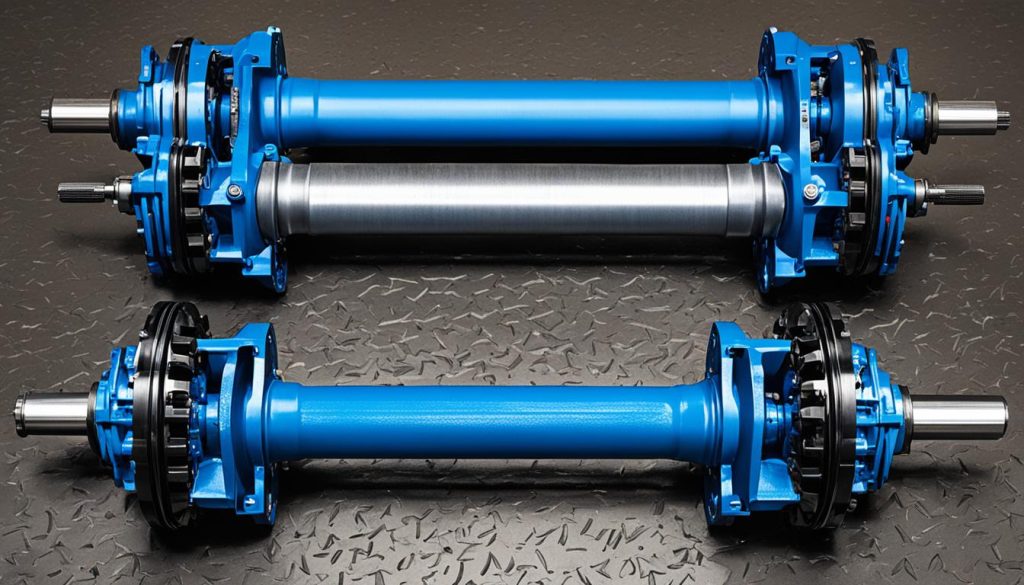
It’s crucial to align your choice of axle ratio with your driving habits and the expectations you have for your vehicle’s performance. Whether it’s the higher torque and traction offered by the 3.73 axle for challenging conditions, or the smooth efficiency of the 3.15 axle for everyday use, understanding the operational differences will guide you to the most suitable option.
Towing and Hauling: Choosing the Right Axle Ratio for Your Needs
As you explore the options for your vehicle’s drivetrain customization, understanding the differences between axle ratios becomes a pivotal factor. Whether you’re hauling a trailer or just hitting the highway for a long cruise, the type of limited slip rear axle you select can greatly impact your vehicle’s performance. Here’s what you need to know about choosing between a 3.15 vs 3.73 axle ratio, especially when it intersects with your everyday driving habits and requirements for towing and hauling.
When to Opt for 3.15 Limited Slip Axle
If your driving routine mostly involves city navigation or smooth highway travel, the 3.15 limited slip axle might be the ideal fit for you. This particular gear set-up is excellent for those who favor fuel efficiency over raw power. It keeps the engine revolutions per minute (RPMs) on the lower side at highway speeds, which can equate to significant savings at the pump.
Advantages of 3.73 Limited Slip Axle for Hauling and Towing
For the heavy-duty enthusiast or those regularly confronting steep gradients, the 3.73 limited slip axle presents itself as the optimal choice. Its gearing strategy offers increased low-end torque, giving you the grunt needed for towing trailers, boats, or handling hefty payloads. When the journey requires extra power for dragging, lifting, or conquering tough terrains, trucks sporting a 3.73 gear ratio are generally the go-to vehicles for robust reliability and forceful performance.
In both cases, the number 6 plays a subtle, yet important role within the context of gears and rotations – referring to the intricacies of engine and axle synchronization that propel your vehicle forward.
| Axle Ratio | Usage | Fuel Economy | Towing Power |
|---|---|---|---|
| 3.15 | Everyday driving and highway cruising | Higher | Adequate for occasional towing |
| 3.73 | Heavy towing and hauling | Lower when towing/handling heavy loads | Optimal for frequent towing |
Interestingly, the pursuit of optimal towing capacity and everyday driving convenience need not be mutually exclusive. Advancements in vehicle technology continue to narrow the gap, offering drivers more well-rounded options.
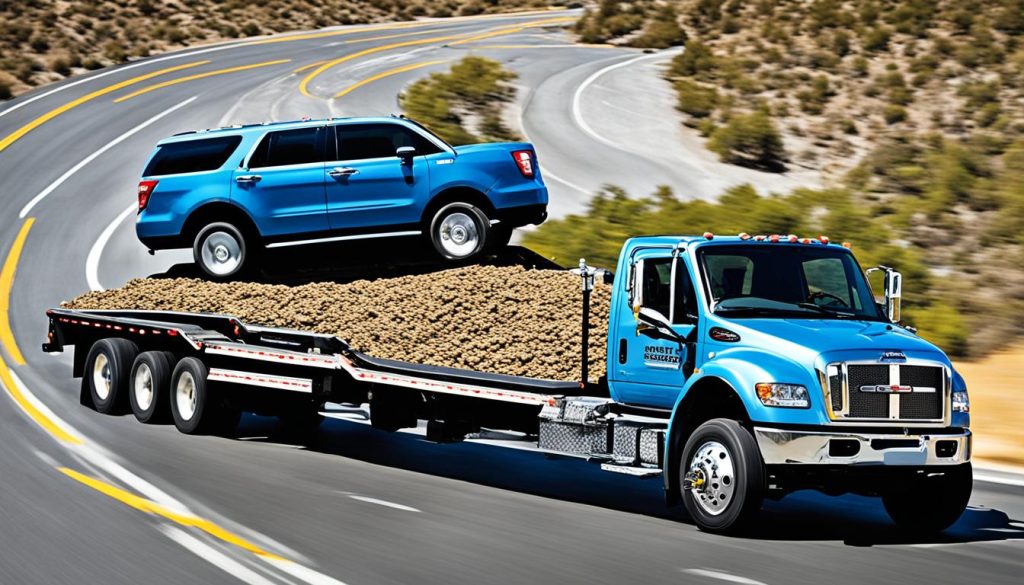
Fuel Efficiency: How Rear Axle Ratios Influence MPG
When choosing a rear axle ratio, one of the most significant considerations for drivers like you is fuel efficiency. It’s a factor that not only impacts your wallet but also the environment. Understanding the rear axle ratio comparison between 3.15 vs 3.73 could make all the difference in your vehicle’s miles per gallon (MPG). Let’s put these two options under the microscope.
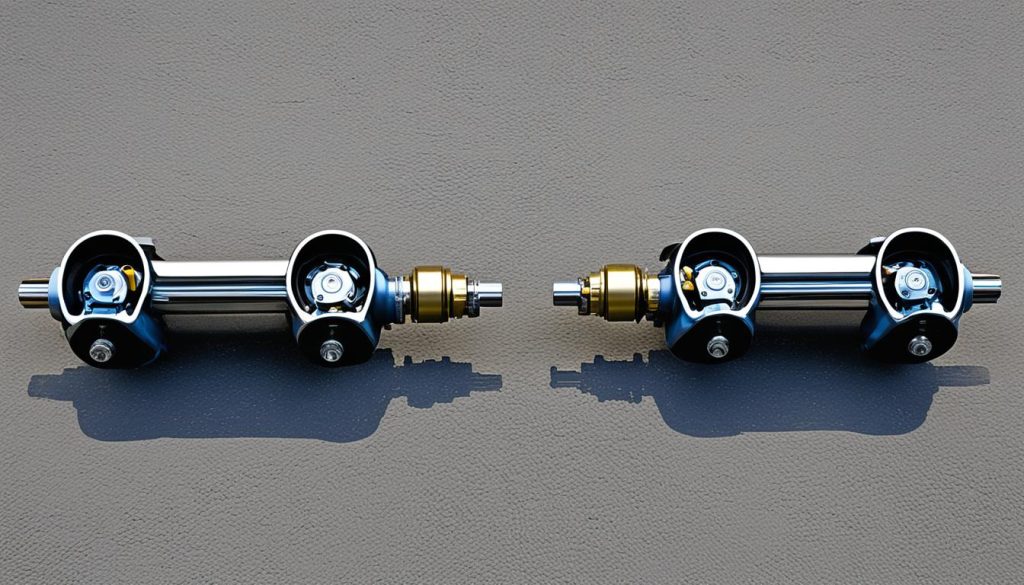
- A 3.15 axle ratio generally yields a lower RPM (Revolutions Per Minute) at highway cruising speeds, which can lead to enhanced fuel efficiency for your vehicle.
- In contrast, a 3.73 axle ratio results in higher RPMs when maintaining highway speeds, typically reducing your vehicle’s MPG.
What does this mean for you as a driver? If your driving predominantly involves long distances on the highway, you may lean toward a lower axle ratio, such as 3.15, to maximize your fuel efficiency. However, if you often drive in city traffic or require your vehicle for performance-oriented tasks, the higher 3.73 axle ratio could be the better suit despite its potential MPG trade-off.
| Axle Ratio | Typical RPM at Highway Speeds | Fuel Efficiency (Estimated MPG) |
|---|---|---|
| 3.15 | Lower | Better |
| 3.73 | Higher | Reduced |
Remember, the right ratio for you will depend on your unique driving needs and the balance you seek between fuel efficiency and performance. A careful rear axle ratio comparison, like contrasting the pros and cons of 3.15 vs 3.73, is essential to make an informed choice for your vehicle’s setup.
Rear Axle Upgrades: When to Consider Switching Ratios
If you’re pondering whether to modify your rear axle ratio, consider the implications of tire size on your decision. An upgrade or modification to your vehicle, such as changing to larger tires, can have a considerable impact on the performance and handling of your automobile. When you equip your car or truck with larger tires, the effective gear ratio diminishes, possibly causing your engine to operate at higher RPMs to maintain your usual driving speed. To counter this effect and preserve your vehicle’s liveliness, selecting a more aggressive axle ratio, like 3.73, might prove beneficial.
Impact of Tire Size on Axle Ratio Choice
As you equip your ride with beefier tires for that authoritative stance or enhanced off-road capability, you’ll want to pay close attention to your axle ratio choice. The interplay between tire size and gear ratios is critical – get it wrong, and you could notice a lag in acceleration or a dip in fuel efficiency. If larger tires are part of your vision for your vehicle, recalibrating with a higher axle ratio such as 3.73 can mitigate the reduced mechanical advantage and keep your performance on point.
Vehicle Modifications That May Necessitate a Ratio Change
Vehicular adaptations extending beyond tire alterations, like lifting your truck for a loftier view of the road or outfitting it with hefty gear for work demands or outdoor adventures, might call for a reassessment of your axle ratio. These types of modifications add strain to your drivetrain – an issue that a higher axle ratio can address by providing increased torque where it’s most needed. When your day-to-day or recreational activities involve regular towing or off-roading, upgrading to an axle ratio that delivers robust power, such as the 3.73, could be a wise move to ensure you keep cruising confidently, no matter the load or landscape ahead.
FAQ
What’s the difference between a 3.15 and a 3.73 limited slip rear axle?
The difference between a 3.15 and a 3.73 limited slip rear axle lies in their gear ratios. A 3.15 ratio means the driveshaft turns 3.15 times for each wheel rotation, favoring fuel efficiency and smoother highway driving. A 3.73 ratio, however, turns the driveshaft 3.73 times per wheel rotation, providing more torque and better performance for towing and acceleration.
What is an axle ratio?
An axle ratio is the ratio between the revolutions of the driveshaft and the rear wheels. It represents the number of times the driveshaft needs to spin to turn the wheels once. This ratio is a crucial factor in a vehicle’s performance, influencing acceleration, towing capability, and fuel efficiency.
How does the axle ratio affect vehicle dynamics?
The axle ratio impacts how a vehicle accelerates, hauls loads, and its fuel efficiency. A lower axle ratio like 3.15 offers better fuel economy and less engine wear at highway speeds, while a higher axle ratio like 3.73 provides increased torque, resulting in better towing capability and off-the-line acceleration.
Why would I choose a 3.15 limited slip differential?
You would choose a 3.15 limited slip differential if you prioritize fuel efficiency and do most of your driving on highways where towing and hauling demands are minimal. This gear ratio allows for lower engine RPMs at cruising speeds, leading to better fuel economy.
What are the benefits of a 3.73 limited slip differential for towing and hauling?
A 3.73 limited slip differential offers more torque at lower speeds, making it ideal for towing and hauling heavy loads. It provides better acceleration and performance in challenging conditions such as steep inclines or rough terrains, making it a preferred choice for frequent towers.
How do different axle ratios influence fuel efficiency?
Higher axle ratios, like the 3.73, generally lead to higher engine RPMs at highway speeds, reducing fuel efficiency. Conversely, lower axle ratios like the 3.15 result in lower RPMs when cruising, which can significantly improve miles per gallon (MPG).
What impact does tire size have on choosing the right axle ratio?
If you install larger tires on your vehicle, the effective gear ratio is reduced, causing your engine to run at higher RPMs for the same speed. In such cases, a higher axle ratio like 3.73 can help maintain performance levels. With standard tire sizes, a lower ratio like 3.15 could be more suitable as it retains fuel efficiency.
When should I consider changing my vehicle’s axle ratio?
Consider changing your vehicle’s axle ratio if you’ve made modifications that affect its performance, such as lifting it or adding heavy aftermarket equipment. Also, if your driving needs shift towards frequent towing, off-roading, or you face consistently rugged terrain, switching to a higher axle ratio like 3.73 would benefit your vehicle’s capability.

